Planning to visit Japan during summer? There is a lot you need to know, such as how hot it gets during summer in Japan, how to survive the heat, and the best places to visit. Summer in Japan is the season when many people travel, especially to Hokkaido, Nagano and Okinawa prefectures that become super popular during this period. However, because of the high temperatures and humidity, precautions must be taken to avoid heatstroke.
In this article, we introduce the characteristics of summer in Japan to get you prepared for your Japan summer vacation.
Table of Contents
- Summer Season in Japan
- Traditional Ways to Keep Cool in Japan Summer
- Japan Summer Food Must-Eats
- Japan Summer Traditional Events & Celebrations
- Best Places to Visit in Japan during Summer
- To Close
Summer Season in Japan

The summer months in Japan are from June to August. When June comes along, Japan enters the rainy season called “tsuyu (梅雨)” in Japanese, which is a period of continuous rainfall. When visiting Japan during this period, it is advisable to always carry an umbrella or raincoat.
Come mid-July, the rainy season ends, and the temperature and humidity starts to rise. Sunny days are more common, but typhoons and heavy rain may occur, so check the weather forecast everyday before you go out.
Summer in Japan has High Temperatures and Humidity
Summer in Japan is very muggy because of the high temperatures and humidity. Even on days where the temperature is the same, if the humidity is higher, it will feel much hotter and uncomfortable as your body temperature rises. The muggy weather will increase your chances of getting heat stroke as water and minerals are stripped from your body which reduces your body’s temperature regulation process. Symptoms of heatstroke include headaches, dizziness, and nausea. In serious cases, you may also lose consciousness.
To prevent heatstroke, avoid going out between midday and 3pm when temperatures are at a peak. If you go out at other times of the day, be sure to drink water frequently, and wear a hat or use a parasol to avoid direct sunlight.
Be Cautious of Typhoons and Heavy Rains
During the summer and early autumn months, pay attention to approaching typhoons and typhoons making landfall, landslides and downpours. In Japan, typhoons can cause power outages and public transportation suspensions due to strong winds and heavy rain. Another frequent occurrence in recent years is flooding and rivers overflow due to heavy rainfall.
When visiting Japan during summer, it is better and safer to check the weather forecast before going out and watch out for typhoons and heavy rain alerts.
For more about typhoons, including what to do in the event of a typhoon, check out Understanding the Tumultuous Typhoons in Japan.
Feeling apprehensive about visiting during summer? Have a look at the weather during other seasons in Japan in Understanding Japan Climate Zones and Weather to help you decide the best time to visit Japan.
Summer Fashion: What to Wear in Japan during Summer

Summer in Japan is really hot and humid. Keeping hydrated is not enough, it is also important to dress for the season to prevent from overheating and getting heat stroke. Light, thin, and airy clothing is generally recommended for the whole summer period, but especially in August, the hottest month in summer. Let’s look at what to wear in the 3 months of summer a little closer.
June until mid-July is normally the rainy season. In June, especially early in the month, it can get cold when it rains so bring a light jacket or cardigan when you go out. It will be raining often, sometimes continuously, so prepare rainboots or wear shoes that you do not mind getting wet. Avoid wearing leather and suede that are weak to water.
After the rainy season, the weather will start to get extremely hot and humid. Thin airy tops and short bottoms will help you keep cool. We recommend visiting Uniqlo, Global Works etc. clothing stores in Japan that will have summer clothing that helps a lot. Since Japan’s summers are so harsh, the fashion industry in Japan is innovative when it comes to creating new materials and clothing designs to fit the season.
Last but not least, this is not really a fashion tip, but do not skimp on the sunscreen. Reapply when you have to, and apply on not just your face but any exposed skin.
Writer's Pick
Traditional Ways to Keep Cool in Japan Summer

In Japan, people have traditional methods of overcoming the hot humid summer. Aside from actually physically lowering your body temperature, there are also ways to mentally cool yourself down by your 5 senses, like sight and sound. Here, we introduce some traditional ways to feel cooler in summer.
Summer Foods to Keep You Cool
Tomatoes, cucumber, and watermelon that are full of water are vegetables & fruits that are commonly eaten in summer. They are said to be effective for releasing excess heat from the body and for replenishing water, so Japanese people eat them a lot in summer to keep cool.
There are also classic summer dishes that are usually available only in summer.
Traditional Japanese Summer Clothing and Traditional Fans
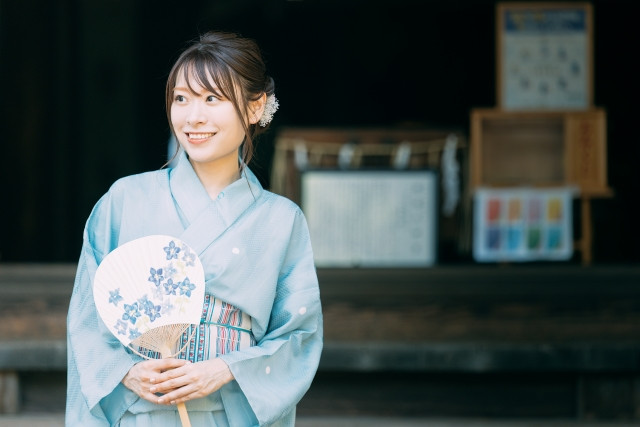
A summer kimono, the Yukata (浴衣) is the most traditional summer clothing in Japan. The Yukata’s design makes it the ideal garment for Japan’s muggy summer climate. It has an open neck, additionally the sleeves and hem allow air to pass through and for heat to escape. The fabrics used to make Yukata are also usually thin, light and breathable.
Another traditional Japanese summer clothing is Jinbei (甚平). Jinbei is an indoor clothing for men and young children, consisting of a short sleeved top and short bottoms. Nowadays, people also wear it outdoors, especially to summer and firework festivals.
On top of these, traditional fans like Uchiwa (うちわ) and Sensu (扇子) are tools to cool down by creating a breeze. Light and handy, they can be stored without taking up much space so you can carry one around and use it whenever you need. Choosing a design and colour that evokes the feeling of “cool”, looking at the fan will also make you cool down mentally.
Decorating with Furin and Sudare

In Japan, summer decorating the house with Furin (風鈴) and Sudare (すだれ) is a way to feel cooler. Furin is a windchime; a small bell made of glass, metal or ceramic. By handing it at a window, the strips of paper called tanzaku will sway when the wind blows making the bell ring out. The Japanese have long used the sound of wind chimes to associate oneself with the cool breeze of wind. Just by hearing the tinkling sound of the furin, they will feel a sense of coolness.
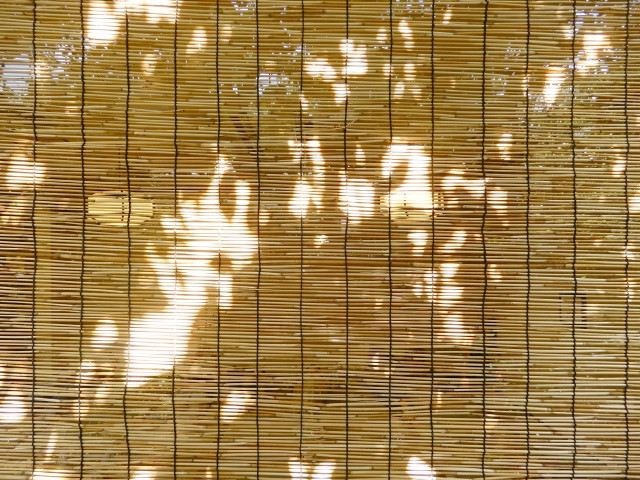
Sudare is a bamboo screen made by connecting thin strips of bamboo together with thread and placing it at the window for shade. Sudare blocks the sun but allows air and wind to pass through. Houses with sudare that provide shade are cooler, making it easier to spend time inside.
Japan Summer Food Must-Eats
Seasonal foods are part of Japanese culture. Let’s look at the seasonal summer foods to try in Japan.
Cold Noodles

There are a variety of cold noodles to enjoy in summer, namely cold somen noodles, zaru soba, and hiyashi-chuka which are often eaten with summer vegetables.
Kakigori
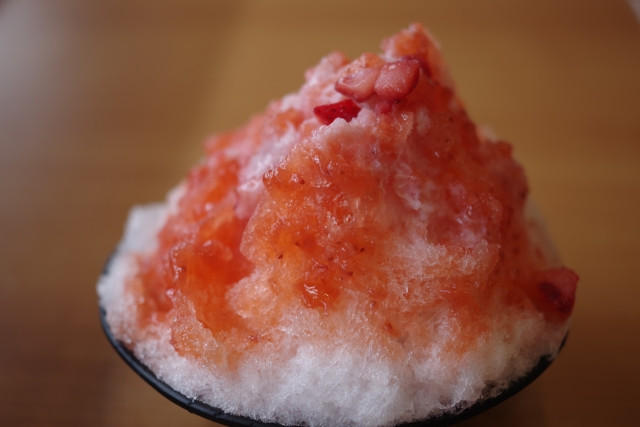
Kakigori (カキ氷), shaved ice, is a popular ice cold dessert to help you cool down in summer. There is the classic crushed ice with sweet syrup poured over it that are common at summer festivals and fireworks festivals.
But there are also fancier kakigori served with an assortment of toppings including ice cream, shiratama, red bean paste, etc. depending on the flavour. These are usually available at traditional Japanese sweets cafes, restaurants and even ramen shops.
Kuzu-mochi & Mizu-yokan
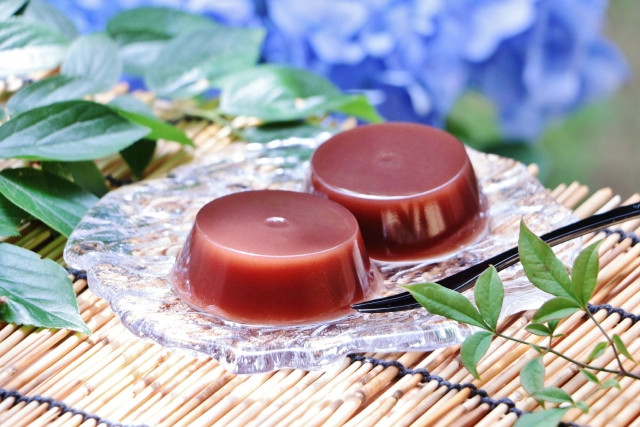
Kuzu-mochi (くず餅) and mizu-yokan (水羊羹) are popular traditional Japanese sweets eaten in summer. Kuzu-mochi has a semi transparent appearance which makes it look cool, and thus enjoyed in summer. Mizu-yokan is made with more water than normal yokan and normally eaten chilled in summer. Both are jelly or agarlike sweets making it light and easy to enjoy as a summer sweet.
Best Places to Visit in Japan during Summer
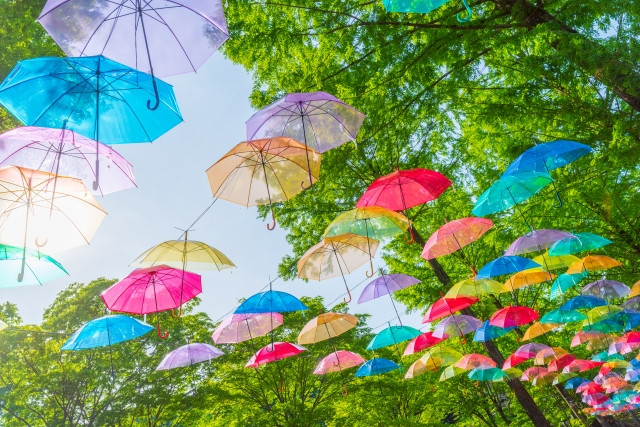
In Japan, there are several must-visit summer destinations. There must be a good reason why Hokkaido, Nagano and Okinawa prefectures are the most visited during summer. In this part, we will introduce the best places to visit in these 3 prefectures, or in other words, we will introduce why exactly these places are so popular in summer.
Hokkaido, Magnificent Views of Nature
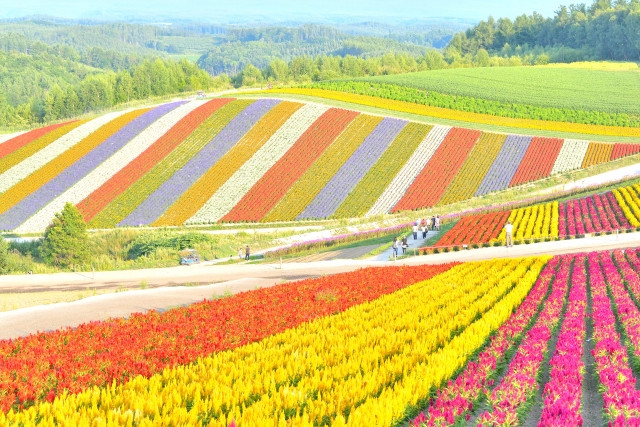
Located in northern Japan, Hokkaido, is a popular tourist destination with magnificent nature sceneries. It is home to Furano, where the largest lavender fields in Japan can be seen, and the Shiretoko Peninsula, which is registered as a UNESCO World Heritage Site. Another popular destination is Asahiyama Zoo in Asahikawa City which is popular for its exhibits of animals in their natural habitat.
In Hokkaido, the maximum temperature during summer is a comfortable 18 to 25 °C / 64 to 77 °C. There is also no rainy season. Many people go to Hokkaido in summer to escape the mainland’s heat. It is refreshing and comfortable to spend summers here.
Nagano with Famous Summer Resorts
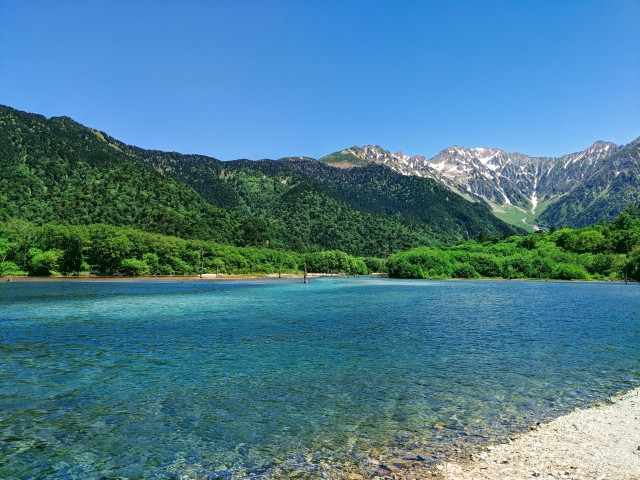
Nagano prefecture is home to places such as Karuizawa and Kamikochi that are cool even during summer, so many people escape the summer heat there.
Karuizawa, surrounded by greenery, has long been a popular summer retreat destination. It is cool enough that you do not need an air conditioner, simply relax at a hotel or rent a summer villa to enjoy the fresh breeze.
On the other hand, at Kamikochi, you can enjoy the spectacular views of the Japanese Alps, Taisho Pond and Kappa Bridge. It is also a popular hiking spot. Those wishing to see alpine flora can visit Hakuba or Norikura Kogen.
Okinawa, Tropical Island Holiday Destination

Okinawa is a great place to visit if you love beautiful beaches. It is the southernmost island in Japan. In addition to swimming and various marine sports, you can also enjoy sightseeing at Churaumi Aquarium and Kokusai Street.
Okinawa’s unique culture, which is very different from other parts of Japan, is also part of the attraction. It would be nice to enjoy Okinawa food like Okinawa soba and goya chanpuru (stir fried bitter gourd), as well as seeing buildings with distinctive stone walls and Shisa.
Japan Summer Traditional Events & Celebrations

There are traditional summer events in Japan that have been passed down through generations. In this part, we will introduce Tanabata, Obon, and Fireworks Festivals.
Tanabata, Make A Wish Upon the Star

Tanabata (七夕), held on the 7th of July, is an event celebrated by decorating strips of paper with wishes written on them, called “tanzkku (短冊)”, on bamboo tree branches and praying to the stars for those wishes to come true. Depending on the region, Tanabata can be held in early to mid August.
Around July 7 is the time of the year when the stars Vega in the constellation Lyra and Altair in the constellation Aquila are best seen. The stars are likened to the mythical figures of Orihime (織姫) and Hikoboshi (彦星), and it is believed to be the day when they are reunited in the skies.
Obon, Worshipping of Ancestor’s Spirits
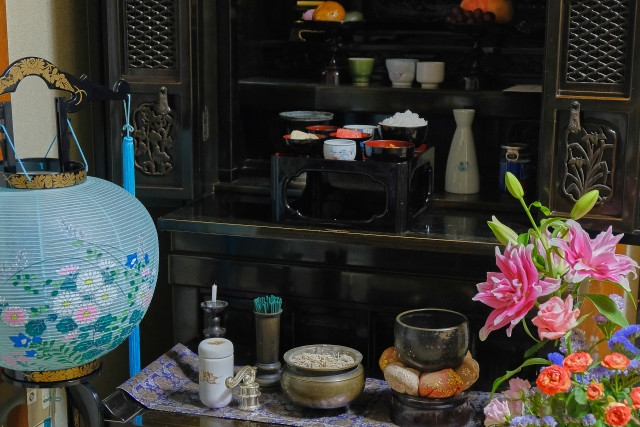
Obon (お盆), held from August 13 to 16, is an event to honour the spirits of ancestors. It is customary to place lanterns around the Buddhist altar and make offerings of fruits and sweets. On August 13, flames called “mukaebi (迎え火)” is lit at the ancestor’s grave, the house entrance, and the garden to welcome the ancestors. Later, on August 16, the same is done to send off the ancestors but this time called “okuribi (送り火)”.
During the Obon period, family members and relatives usually gather to remember and hold a memorial service for those who have passed on.
Fireworks Festival, Lighting Up the Night Sky
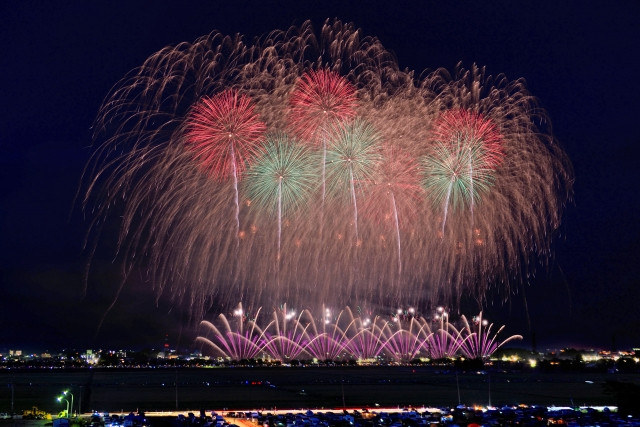
In summer, fireworks festivals called “hanabi taikai (花火大会)” are held all around Japan. Below, we introduce 3 of the most famous fireworks festivals in Japan.
National Fireworks Competion (全国花火競技大会, also called 大曲の花火 Omagari no Hanabi)
With a history of over 100 years, this event is held in the Omagari district of Daisen City, Akita Prefecture. Features fireworks by some of the best pyrotechnicians in Japan.
Nagaoka Fireworks Festival Show (長岡まつり大花火大会)
Held in Nagaoka City, Niigata prefecture, the highlight of this event is the “Phoenix (復興祈願花火フェニックス)” that is set off over a distance of approximately 2 km, that carries the wish for complete recovery from damages caused by disasters. Another famous firework is the「正三尺玉 shosanshakudama」which boasts a diameter of 650 m.
Suwa Lake Fireworks Festival (諏訪湖湖上花火大会)
This is the largest fireworks display in Japan with around 40,000 released every year. It is held in Suwa City in Nagano prefecture.
If you go to a firework festival, we recommend looking around the night stalls near the venue where you can buy sweets and play games.
To Close
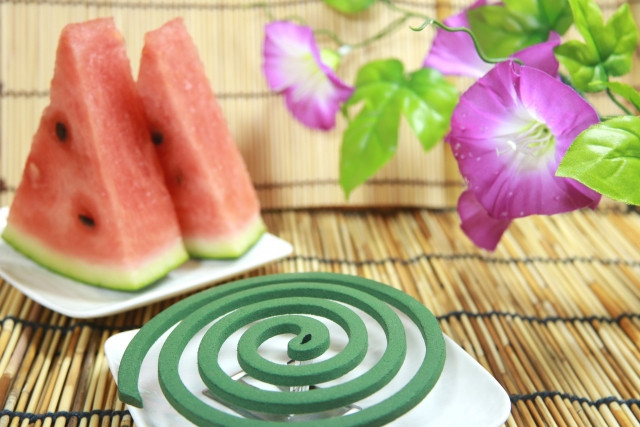
Summer in Japan is hot and humid. To keep cool, try the time-tested traditional methods like wearing yukata, getting a wind chime that works as a souvenir too, and using fans. Summer in Japan is a popular time to travel. Popular summer destinations include Hokkaido, Nagano and Okinawa. There will be summer events like firework festivals all around Japan, so take the chance to attend one.










.jpg)
.jpg)























